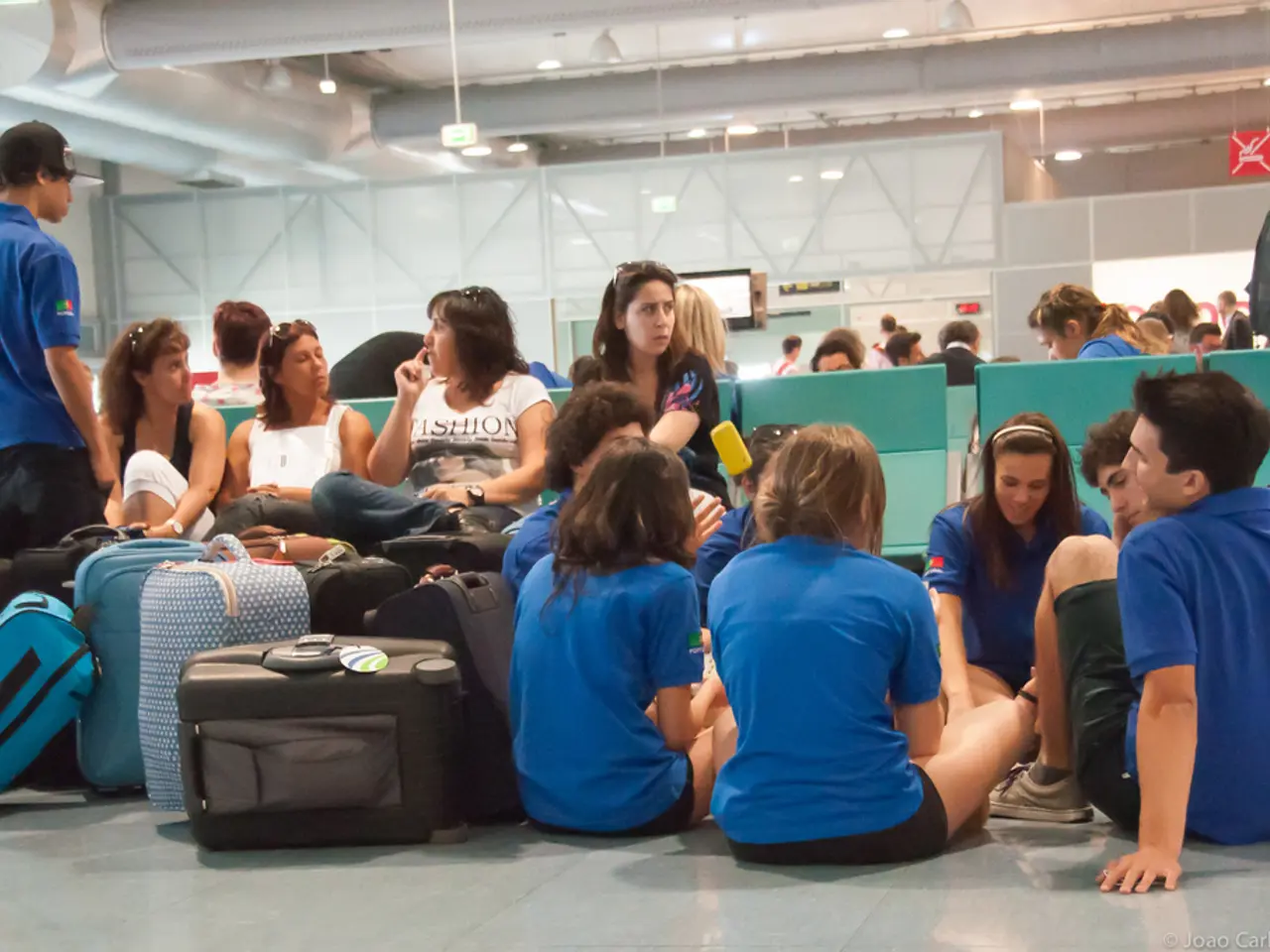Occasionally, the use of Passenger Boarding Bridges and other times Boarding Stairs in aircraft boarding processes.
In the world of aviation, the decision to use passenger boarding bridges or stairs can greatly impact the travel experience for passengers. This choice is influenced by a variety of factors, including airport infrastructure, aircraft type, operational efficiency, and cost considerations.
Airports with developed terminal buildings and sufficient aerobridge facilities, such as those in major cities, tend to favour boarding bridges. These structures offer passengers protection from the elements and enhanced safety, especially in bad weather conditions. However, smaller or regional airports may not have the infrastructure to support aerobridges, necessitating the use of stairs and sometimes buses to transport passengers to planes parked remotely on the apron.
The design of the aircraft also plays a significant role in this decision. Some aircraft, like certain models of Boeing 737, have designs that make boarding via stairs easier or more practical than through jet bridges positioned at a certain height. Aircraft with integrated stairs can even board passengers without any external equipment.
Operational efficiency and passenger flow are other key factors. Boarding bridges generally speed up boarding and disembarking, as passengers can walk straight from the terminal onto the plane without delays caused by transferring via bus or climbing stairs. However, in some high-turnover or remote stand situations, stairs might be quicker to deploy and use than waiting for an available jet bridge or bus transfer.
Safety and passenger comfort are also important considerations. Boarding bridges shield passengers from weather and airport ramp hazards, reducing risks especially for children, elderly, or disabled passengers. Stairs expose passengers to outdoor conditions and require careful supervision to maintain safety. Airports with aerobridges often handle higher volumes or premium traffic prioritizing these factors.
Cost and space constraints are additional factors. Installing and maintaining boarding bridges involves significant capital and space, making them less feasible for airports with limited budgets, less traffic, or where apron space is restrictive.
Some airlines, such as Ryanair, choose to reduce costs by unloading and loading passengers from the aircraft's own ladder instead of using passenger bridges or stair services. This practice, while cost-effective, may not offer the same level of comfort and convenience as boarding bridges, particularly in adverse weather conditions.
At some large airports, passengers are required to board by passenger bridge, with exceptions being rare. However, in other large airports, both passenger bridges and stairs are used for boarding, with the reasons for this varying.
Interestingly, at some airports, the passenger boarding bridge infrastructure may be reserved for Schengen member country airlines, causing non-EU airlines' passengers to board via passenger stairs. This can lead to differences in the boarding experience for passengers depending on their airline of choice.
In busy time zones, momentary planning errors or delays in managing apron traffic can cause passengers to board/disembark planes via stairs instead of bridges. This can occur due to delays in apron traffic management or insufficient capacity at the airport.
In conclusion, the choice between passenger boarding bridges and stairs is influenced by a variety of factors, including airport infrastructure, aircraft type, operational efficiency, safety, cost, and passenger comfort. Understanding these factors can help passengers prepare for their travel experience and make informed decisions about their travel arrangements.
- When traveling through airports with insufficient aerobridge facilities, passengers might need to use stairs to board planes, especially in smaller or regional airports.
- Airports with developed terminal buildings, like those in major cities, often prioritize the use of boarding bridges, as they offer improved safety and comfort for passengers, particularly during bad weather.




